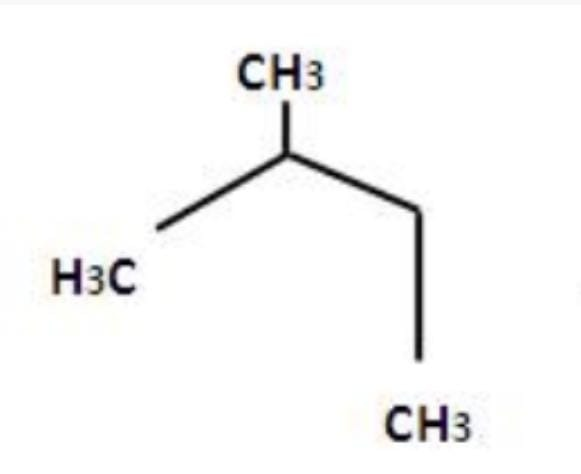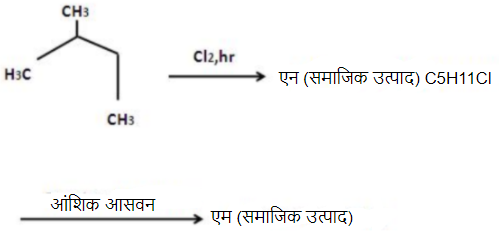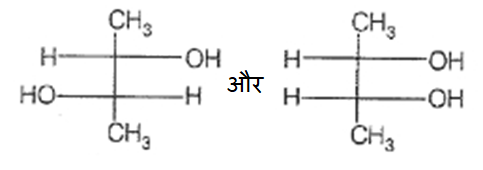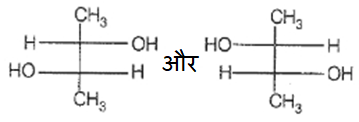Lactic acid is:
1. propionic acid
2. β-hydroxypropanoic acid
3. α-hydroxypropanoic acid
4. none of the above
लैक्टिक अम्ल है:
1. प्रोपिओनिक अम्ल
2. β-हाइड्रॉक्सीप्रोपेनॉइक अम्ल
3. α-हाइड्रॉक्सीप्रोपेनॉइक अम्ल
4. उपरोक्त में से कोई नहीं
How many types of functional group can be present in an amine with the formula C3H9N?
(1) 1
(2) 2
(3) 3
(4) 4
सूत्र C3H9N के साथ ऐमीन में कितने प्रकार के क्रियात्मक समूह उपस्थित हो सकते हैं?
1. 1
2. 2
3. 3
4. 4
On monochlorination of n-pentane, the number of isomers formed is:
(1) 4
(2) 3
(3) 2
(4) 1
n-पेन्टेन के मोनोक्लोरीनीकरण पर, निर्मित होने वाले समावयवियों की संख्या है:
1. 4
2. 3
3. 2
4. 1
Which of the following acids shows stereoisomerism?
(1) Oxalic acid
(2) Tartaric acid
(3) Acetic acid
(4) Formic acid
निम्नलिखित में से कौन सा अम्ल त्रिविम समावयवता को दर्शाता है?
1. ऑक्सैलिक अम्ल
2. टार्टरिक अम्ल
3. एसीटिक अम्ल
4. फॉर्मिक अम्ल
The maximum number of stereoisomers possible for 3-hydroxy-2-methyl butanoic acid is:
1. 1 2. 2
3. 3 4. 4
3-हाइड्रॉक्सी-2-मेथिल ब्यूटेनॉइक अम्ल के लिए संभव अधिकतम त्रिविम समावयवियों की संख्या है:
1. 1 2. 2
3. 3 4. 4

what are the no. of N and M?
(1) 6, 6
(2) 6, 4
(3) 4, 4
(4) 3, 3

M और N की संख्या क्या है?
1. 6, 6
2. 6, 4
3. 4, 4
4. 3, 3
Which of the following pairs are enantiomers?
1. 
2. 
3. 
4. 
निम्नलिखित में से कौन-सा युग्म प्रतिबिंबी समावयवी हैं?
1. 
2. 
3. 
4. 
Identify the structure of x,
(1)
(2)
(3)
(4)
x की संरचना की पहचान कीजिए-
(1)
(2)
(3)
(4)
The IUPAC name of the compound CH3CONH(Br) is:
1. 1-bromoacetamide
2. N-bromoethanamide
3. Ethanoyl bromide
4. None of these
यौगिक CH3CONH(Br) का IUPAC नाम है:
1. 1-ब्रोमोएसीटेमाइड 2. N-ब्रोमोएथेनामाइड
3. एथनॉयल ब्रोमाइड 4. इनमें से कोई नहीं
Which of the following contains only three pairs of electrons?
(1) Carbocation
(2) Carbanion
(3) Free radical
(4) None of these
निम्नलिखित में से किसमें केवल तीन इलेक्ट्रॉन युग्म होते हैं?
1. कार्बधनायन
2. कार्बऋणायन
3. मुक्त मूलक
4. इनमें से कोई नहीं











